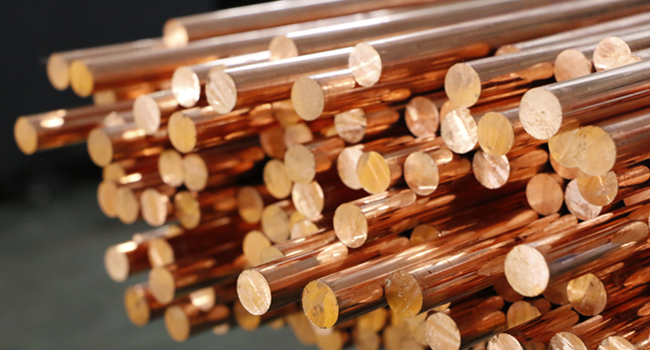15 years one-stop China custom CNC machining parts factory

Hey there I’m VMT Sam!
With 25 years of CNC machining experience we are committed to helping clients overcome 10000 complex part-processing challenges all to contribute to a better life through intelligent manufacturing. Contact us now
 462 |
Published by VMT at Aug 10 2023
462 |
Published by VMT at Aug 10 2023
Bronze alloys have been an integral part of human civilization for centuries, known for their versatility, durability, and aesthetic appeal. However, a question that often arises is whether bronze alloys, including bronze, brass, and copper, possess any magnetic properties. In this comprehensive exploration, we will delve into the intriguing world of these metal alloys and uncover the truth behind their magnetic behavior.
Bronze alloys have been an integral part of human culture, from ancient civilizations to modern industries. With their distinct compositions and unique properties, these alloys have found their way into art, architecture, machinery, and more. One intriguing aspect that has puzzled many is their magnetic behavior.
Bronze, brass, and copper are copper-based alloys, each with its distinct blend of metals. Bronze typically consists of copper and tin, while brass incorporates copper and zinc. copper, also known as gunmetal, combines copper, tin, and zinc. These alloys are prized for their malleability, corrosion resistance, and pleasing aesthetics.

Magnetism, a fundamental force of nature, is the result of aligned atomic and molecular interactions within a material. Substances can exhibit ferromagnetic, paramagnetic, diamagnetic, or non-magnetic behavior. Elements like iron, nickel, and cobalt are well-known for their magnetic properties.
In general, bronze alloys are considered non-magnetic. The presence of magnetic elements like iron in negligible amounts does not significantly impact their magnetic behavior. This makes bronze alloys suitable for applications where magnetism could interfere with functionality or aesthetics.
Alloy Composition
The specific combination of metals in an alloy plays a crucial role in determining its magnetic properties. While iron is magnetic, its presence in bronze alloys is usually minimal, leading to their non-magnetic nature.
Crystal Structure
The atomic arrangement within a material, known as its crystal structure, can affect its magnetic behavior. Bronze alloys typically have a crystalline structure that does not promote magnetism.
Heat Treatment
Heat treatment processes, such as annealing or quenching, can alter the microstructure of alloys and influence their magnetic properties. Bronze alloys are often heat-treated to enhance their mechanical characteristics, but this does not introduce magnetism.
The non-magnetic nature of bronze alloys makes them invaluable in various applications. From intricate sculptures and musical instruments to marine components and electrical connectors, these alloys shine where magnetism is a concern.
Unlike other bronze alloys, copper can exhibit weak magnetic properties due to its higher zinc content. However, its magnetism is still considerably lower than that of ferromagnetic materials.

Misconceptions about the magnetic properties of bronze alloys have led to confusion. Understanding the science behind these materials dispels myths and enables informed decision-making.
The misconception that bronze possesses significant magnetic properties likely arises from its occasional interaction with magnets. However, this interaction is often due to the presence of other magnetic materials nearby rather than an intrinsic property of bronze itself.
Bronze alloys continue to captivate the world with their versatility. Their unique combination of strength, corrosion resistance, and non-magnetic nature opens doors to a wide range of applications across industries.
As technology advances and new alloy formulations emerge, the future of bronze alloys looks promising. Innovations may lead to enhanced properties, expanding the potential applications even further.
In conclusion, bronze, brass, and copper are primarily non-magnetic alloys, with copper being a potential exception due to its higher zinc content. Their versatility and unique characteristics have made them essential in numerous fields, offering a blend of practicality and aesthetic appeal. Understanding their magnetic properties sheds light on their remarkable attributes, allowing us to fully appreciate their role in shaping our world.
The belief that bronze is inherently magnetic is a misconception rooted in limited understanding. Bronze, primarily composed of copper and tin, lacks the necessary properties for substantial magnetism. While minor exceptions might exist due to impurities or specific alloy blends, true magnetic behavior in bronze is uncommon. So, the next time you come across a bronze artifact, rest assured that its lack of magnetism is a testament to the unique composition that has made it an invaluable material throughout history.
Q1: Can bronze alloys be used in electrical applications?
A: Yes, bronze alloys are often used in electrical connectors and components due to their non-magnetic nature.
Q2: Are bronze alloys more corrosion-resistant than iron-based alloys?
A: Yes, bronze alloys are known for their superior corrosion resistance compared to many iron-based alloys.
Q3: Is copper stronger than regular bronze?
A: copper may have comparable strength to regular bronze, but its higher zinc content can affect its mechanical properties.
Q4: Can bronze alloys replace steel in certain applications?
A: In some cases, bronze alloys can be used as a replacement for steel, particularly where non-magnetic and corrosion-resistant properties are desirable.
Q5: How do heat treatment processes impact the magnetic behavior of bronze alloys?
A: Heat treatment processes primarily influence the mechanical properties of bronze alloys and have minimal impact on their magnetic behavior.
Q6. Can bronze be attracted to a magnet?
A: In general, bronze is not attracted to magnets due to its composition, which lacks the necessary magnetic elements.
Q7. Are there any types of bronze that are magnetic?
A: While most bronze alloys are non-magnetic, there are some rare variations that might exhibit minimal magnetic properties due to impurities or specific alloying elements.
Q8. Why do some bronze objects stick to magnets then?
A: Bronze objects sticking to magnets are usually influenced by the presence of nearby magnetic materials rather than the bronze itself being magnetic.
Q9. Could bronze have been made magnetic in history?
A: Given the composition and properties of bronze, it's unlikely that ancient civilizations intentionally created magnetic bronze due to its primary use in tools and decorative objects.
Q10. What are the main uses of bronze today?
A: Bronze is used in a wide range of applications, including sculpture casting, musical instruments, electrical components, and architectural detailing, among others.
Ready To Start Your Next Project?
Get Instant Quote

Request a Free Quote
Send us a message if you have any questions or request a quote. We will get back to you ASAP!